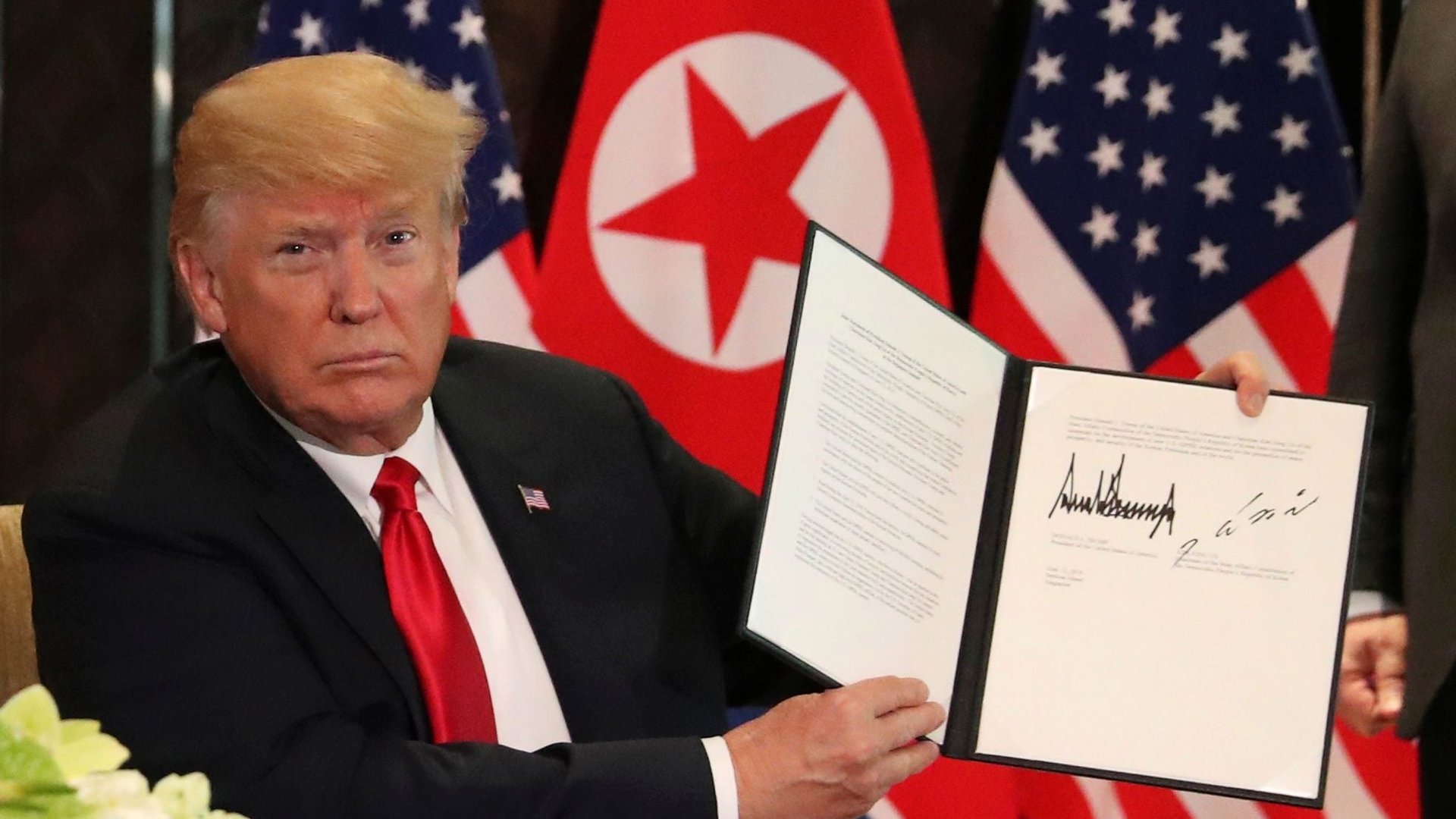25 years of North Korea and the US agreeing to things that don’t work out
As Donald Trump flies back to the United States after his historic sitdown with Kim Jong Un, the big question remains: “What, exactly, did this summit accomplished?”


As Donald Trump flies back to the United States after his historic sitdown with Kim Jong Un, the big question remains: “What, exactly, did this summit accomplished?”
Years of recent, readily available history show that North Korea has often been eager to negotiate deals with past US administrations. The hard part has always been agreeing to and enforcing the details.
The administrations of Bill Clinton and George W. Bush signed agreements, only to have them end in failure after years of effort. These initial “joint statements” have ranged from vaguely worded—like the one that Trump and Kim put out in Singapore—to the more detailed. Here’s how they compare:
Bill Clinton, 1993
After nine days of talks at the UN, the US and North Korea essentially agreed to keep talking, based on their mutual support of 1992’s “North-South Joint Declaration on the Denuclearization of the Korean Peninsula.”
In that landmark 1992 declaration, Pyongyang agreed “not to test, manufacture, produce, receive, possess, store, deploy, or use nuclear weapons; to use nuclear energy solely for peaceful purposes; and not to possess facilities for nuclear reprocessing and uranium enrichment.”
In the 1993 US-North Korea pact, both sides gave “assurances against the threat and use of force, including nuclear weapons.” This ultimately resulted in the 1994 “agreed framework” towards a nuclear-free peninsula that is considered the closest move towards a successful deal.
Eight years of talks later, it all fell apart.
George W. Bush, 2005
After the Clinton-led framework failed, China helped push North Korea to denuclearize, via the “Six Party Talks.” On their fourth meeting, in Beijing in 2005, the US, China, North Korea, South Korea, Russia, and Japan put out a detailed joint statement to say:
- North Korea “committed to abandoning all nuclear weapons and existing nuclear programs.”
- The US “affirmed that it has no nuclear weapons on the Korean Peninsula and has no intention to attack or invade” North Korea.
- All sides agreed the 1992 declaration should be “observed and implemented.”
- All parties pledged “economic cooperation in the fields of energy, trade and investment” with North Korea.
After multiple rounds of talks, George W. Bush removed North Korea from the US’s list of state sponsors of terrorism in 2008. However, talks collapsed in 2009 when North Korea fired a test missile after disagreeing with the other parties about inspections and verification of denuclearization.
Barack Obama’s administration ratcheted up sanctions as Kim Jong Un increased militarization. But there were no further negotiations.
Donald Trump, 2018
The Trump-Kim joint statement released today (June 12) makes no mention of the 1992 declaration that was the basis for previous agreements.
Instead, it references this year’s “Panmunjom Declaration for Peace,” the agreement between North and South Korea to formally end their decades-long state of war. That declaration uses less specific language about the North’s denuclearization, saying both sides “confirmed the common goal” of “a nuclear-free Korean Peninsula.”
The Trump-Kim agreement also says that Kim reaffirmed “his firm and unwavering commitment to complete denuclearization of the Korean Peninsula,” and that North Korea “commits to work towards the complete denuclearization of the Korean Peninsula.”
Both sides have agreed to the repatriation of the remains of prisoners of war and soldiers missing in action from the Korean War.
The joint statement was overshadowed after the summit, when Trump appeared to make a huge, surprise concession to North Korea, agreeing to pull US troops out of the region and stop joint military exercises with South Korea. That’s exactly the scenario that Beijing has been pushing for for a year—but the US Department of Defense said it had no advance knowledge of any such moves.
The US military’s history in Korea dates to the 1870s and the presidency of Ulysses S. Grant. The Trump-Kim summit is likely to be just another step in the long quest to achieve a lasting peace on the peninsula.